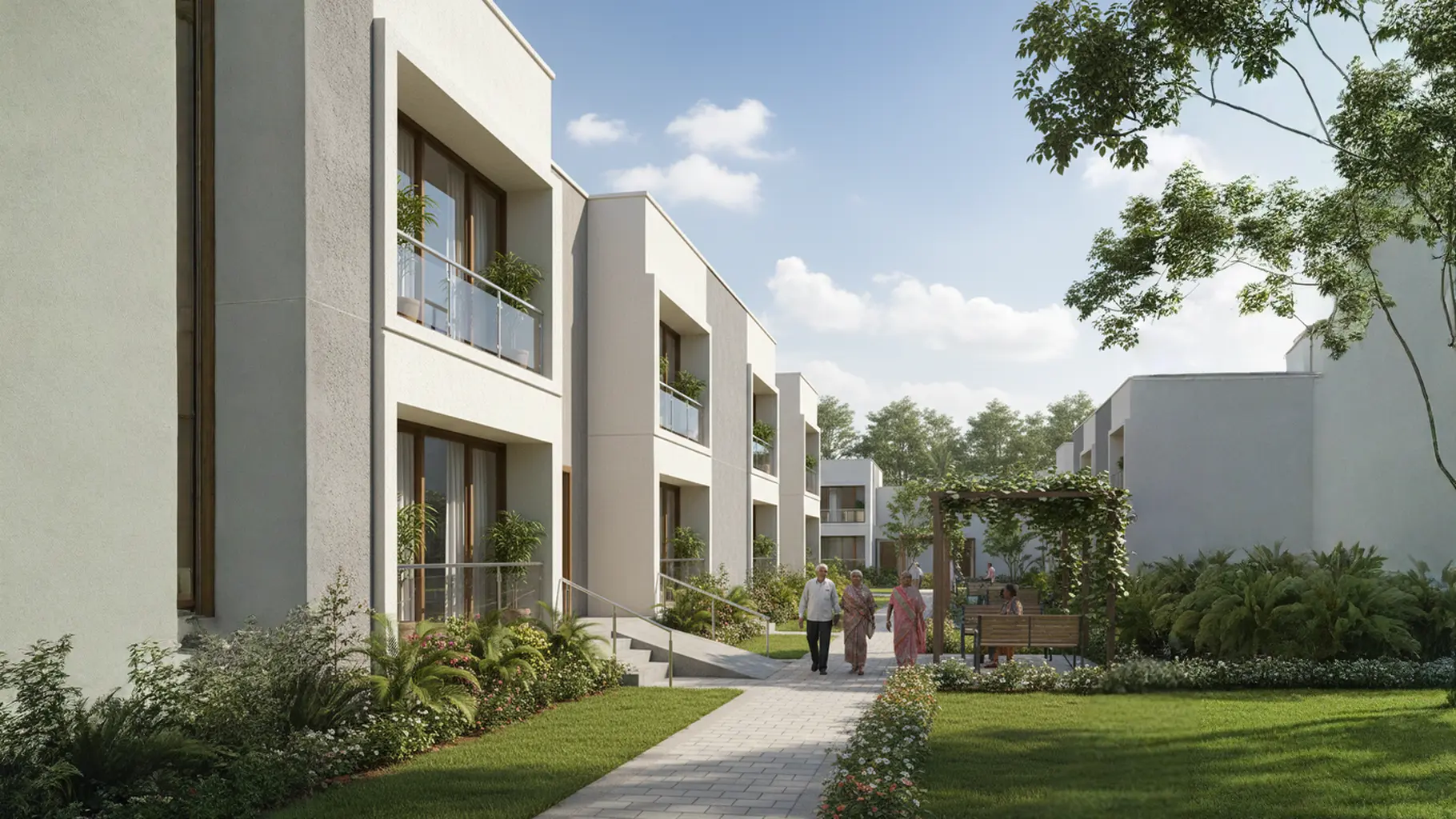Author: Aditya Pareek | EQMint | Business News
India’s leading real estate developers — from the Hiranandani Group to the GMR conglomerate — are aggressively entering the high-end retirement housing segment, driven by a rapidly ageing population that is financially stronger, health-conscious, and increasingly open to independent senior living. What was once considered a niche, emotionally sensitive category is now emerging as one of the most promising growth verticals in Indian real estate.
Industry experts say the convergence of demographic shifts, rising life expectancy, lifestyle changes, and asset-rich retirees has created a massive opportunity that developers can no longer ignore. Retirement housing, once limited to isolated ashrams or charity-run senior homes, is now being reimagined as a premium, amenity-rich, professionally managed real estate product.
A New Consumer Class: Older, Wealthier, Independent
For decades, Indian families followed the traditional joint-family model where elderly parents lived with children. That norm is disappearing fast. Urbanisation, nuclear families, and the global mobility of younger generations have reshaped expectations and realities.
Today’s 55–75 age group in India represents:
- Higher disposable income
- Stable pension and investment income
- Rising property ownership
- Longer life expectancy
- Increased focus on comfort, wellness, and dignity
This makes them a high-value consumer segment, underserved by traditional real estate offerings.
Developers say seniors today do not want dependence. They want privacy, community, medical security, and the freedom to live life on their own terms.
Why Top Developers Are Suddenly Investing in Senior Living
Major real estate players traditionally focused on residential, office, and retail spaces. Their entry into luxury retirement housing signals a fundamental shift in market appetite.
Industry analysts highlight several reasons:
1. India’s Ageing Population Is Growing Faster Than Expected
According to government projections, India will have 17 crore senior citizens by 2036, up from 10 crore in 2021. By 2050, one in five Indians will be over the age of 60. This unprecedented demographic shift makes senior living a long-term growth sector.
2. The Senior Housing Market Is Underdeveloped
Unlike countries such as the US or Japan, where retirement communities are common, India still lacks professionally managed, purpose-built senior living infrastructure. There are fewer than 100 organized senior living projects serving a population of more than 100 million elderly people.
3. Seniors Are Willing to Pay for Quality
From luxury clubhouses to concierge services, physiotherapy centres, assisted living facilities, and tech-enabled monitoring, retirees today are comfortable spending for safety and comfort. Ticket sizes between ₹60 lakh and ₹3 crore are becoming common.
4. A New Revenue Stream for Developers
Senior housing allows developers to diversify beyond cyclical residential markets. It also provides recurring revenue through maintenance, hospitality, and healthcare services.
5. Global Investors Are Interested
Private equity funds specializing in senior living and health-backed real estate are exploring partnerships with Indian developers.
Who’s Entering the Space?
Hiranandani Communities: The Hiranandani Group has been among the earliest large developers to explore senior living, integrating retirement homes within township ecosystems equipped with hospitals, wellness centres, and community infrastructure.
GMR Group: Best known for airports and infrastructure, GMR has announced interest in premium senior-living assets as part of its real estate diversification strategy. Analysts say GMR’s hospitality experience positions it well in this segment.
Other Developers: Prestige Group, Brigade, Max Estates, Tata Housing, and Smartworks have also evaluated or launched senior-focused residential products — some independently, others through joint ventures with healthcare and hospitality partners.
What High-End Retirement Housing Looks Like in 2025
Today’s premium retirement communities are far from old-age homes. They function more like five-star, medically integrated lifestyle residences.
Modern senior-living projects include:
- 24/7 medical emergency response
- Physiotherapy and assisted mobility support
- Anti-skid flooring and universal-access design
- Community dining, health cafes and dietician support
- Concierge services
- Fitness studios and wellness spas
- Activity clubs, workshops, and hobby spaces
- Partnerships with hospitals
- App-based health monitoring
- On-call nursing and rehabilitation services
Developers say the demand is “comfort-led, not charity-led.
Changing Social Dynamics: Seniors Choosing Freedom
One of the biggest drivers of this shift is the evolving mindset among India’s elderly. Instead of depending on children who may live abroad or in other cities, seniors increasingly prefer structured, community-driven living.
A growing number of affluent parents — especially in metros like Mumbai, Bengaluru, Chennai, Hyderabad and Pune — are proactively choosing senior-living communities as a lifestyle upgrade, not as a last resort.
Investors Call It the ‘Next Big Theme’ in Real Estate
Investment advisory firms and real estate analysts are bullish on the segment for several reasons:
- Predictable long-term demand
- Non-cyclical customer base
- High potential for recurring income
- Increasing medical and wellness spending by seniors
- Shortage of organised supply
- Strong appetite among NRIs looking for safe homes for parents
Some analysts even describe retirement housing as “the co-living equivalent for seniors” — a model ready for large-scale institutionalisation.
Challenges Remain, But the Market Is Moving Fast
Despite strong demand, the industry faces obstacles:
- Need for trained caretakers
- High operating costs
- Lack of regulatory clarity
- Social hesitation about seniors living independently
However, developers argue that as more high-quality projects launch, acceptance will grow quickly — just as it did for gated communities and mixed-use townships two decades ago.
Conclusion: The Next Decade Belongs to Senior Living
From Hiranandani to GMR, the rush into high-end retirement housing marks a turning point in India’s real estate evolution. What began as a niche sector is rapidly becoming a mainstream investment category driven by demographics, economics, and shifting cultural aspirations.
India’s senior citizens — wealthier, healthier, and more independent than ever — are redefining how ageing should look. Developers are responding with a new generation of retirement communities built on dignity, comfort, and long-term care.
As demand grows, retirement housing may soon become one of the most influential themes in India’s real estate story for the decade ahead.
For more such news and information visit EQMint.
Disclaimer: This article is based on information available from public sources. It has not been reported by EQMint journalists. EQMint has compiled and presented the content for informational purposes only and does not guarantee its accuracy or completeness. Readers are advised to verify details independently before relying on them.









